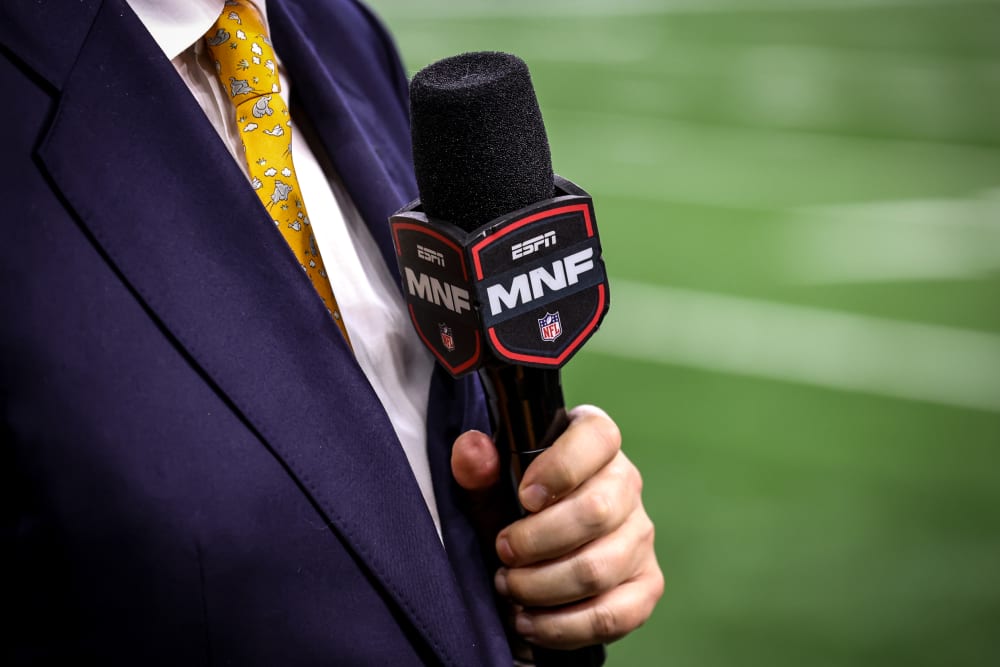The NFL announced a deal with ESPN this week that differs significantly from how the league and one of its most important broadcast partners have always done business with each other. Instead of the traditional exchange in which ESPN hands the NFL a pile of cash for the rights to air a slate of Monday Night Football games (and some other games), this deal marries the two entities together as equity partners. The NFL will now own a 10% slice of ESPN, and the country’s biggest sports network will take over some of the league’s media properties, including the NFL Network and the Red Zone Channel, which gives live updates from every game when teams are close to scoring a touchdown.
The NFL will now own a 10% slice of ESPN.
“So what if I told you,” to borrow the language that ESPN used to promote its 30 for 30 series, that the league’s biggest TV deal yet could be the catalyst for a decline in football’s popularity similar to what boxing experienced after it reached a high mark in the late ‘80s and ‘90s? There’s no guarantee that will happen. But the declining interest in boxing as a sport is a reminder that a sport’s popularity can wane if the people in charge make it increasingly expensive for fans to follow it.
Some will find it hard to even imagine that America’s most popular and profitable sport could soon face an existential crisis. The league’s 32 teams shared a record $13.8 billion in national revenues last season, prompting a rise in the NFL salary cap that in the offseason led to record contracts for players like Myles Garrett of the Cleveland Browns and his rival, edge rusher TJ Watt of the Pittsburgh Steelers.
Football’s 17.5 million viewers per game is, well, in a league of its own. The NBA, MLB and NHL can’t compare.
The new deal represents a seismic shift for both sides. For years, ESPN walked a tightrope. It had a business model anchored on paying billions of dollars for sports broadcast rights which it monetized by selling advertisers access to its audience, and an army of reporters and analysts it expected to maintain ethical boundaries in covering the sports leagues. Selling a stake in the network to the most powerful of those partners is aimed at helping ESPN, whose parent company, The Walt Disney Co., just announced a consolidation of its streaming services when it launches its own $30/month streaming service this month.
For the NFL, it means actual ownership for the first time in one of the external entities that broadcasts its games, just as that network is ramping up the next phase in its streaming strategy. That’s important for the league, which in recent years has leaned into streaming by spreading out the rights to its games across multiple services.
When the NFL launched its popular Sunday Ticket service in 1994, it did so through one partner, DirecTV, which carried every regular season game and charged consumers between $99 and $139 a season for the full package. Sunday Ticket now sells for between $378 and $480 for the season through YouTube.
The catch is that many regular season games are no longer available with a Sunday Ticket subscription.
The catch is that many regular season games are no longer available with a Sunday Ticket subscription. Fifteen Thursday Night Football games now stream exclusively on Amazon’s Prime Video platform, which costs money to access, and two Christmas Day contests will play on Netflix, which also costs money to access.
With the NFL now fully in bed with ESPN as its new streamer prepares to launch, the league appears to be nodding toward further decoupling games from Sunday Ticket. It’s not absurd to think the future could bring a pay-per-view model in which fans are asked to pony up to stream the games of just one team, or even individual contests, instead of buying one package.
That day could be far off, given that the league’s deal with YouTube runs though the 2029 season, but it’s likely executives have thought about unconventional ways of selling the games to consumers. Former ESPN president John Skipper, who left the network in 2017, argued on a 2023 podcast that “the single best way I can think of for the NFL to increase their annual revenue take for their clubs, is to make the Super Bowl a Pay-Per-View event.” He suggested that the NFL could charge viewers up to $250 to watch the Super Bowl.











